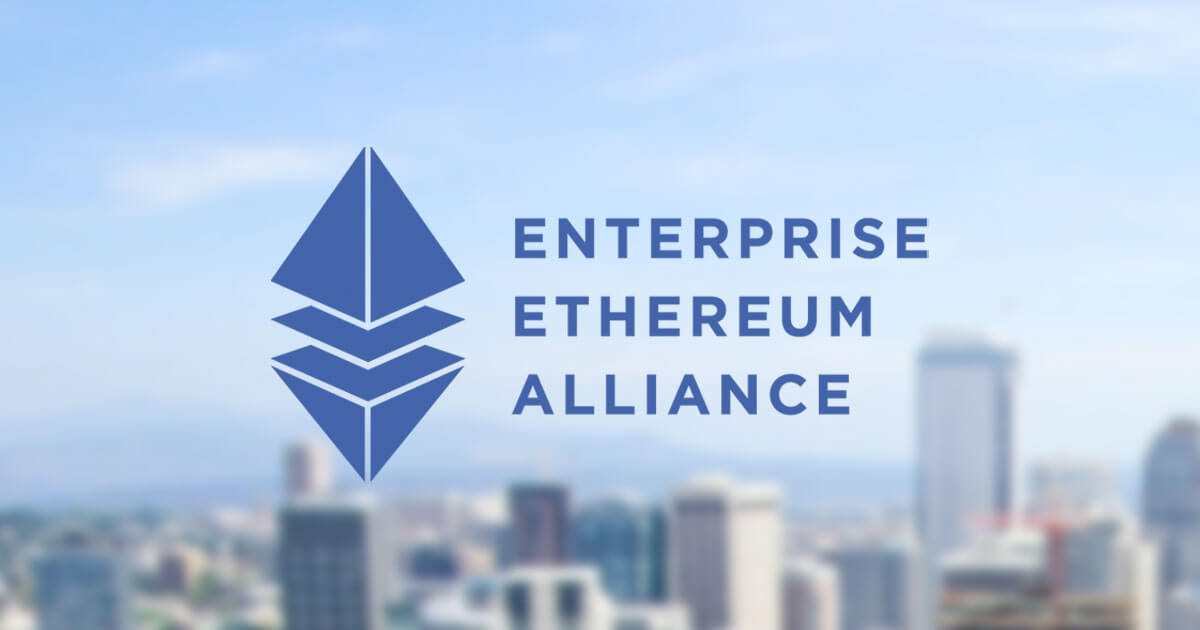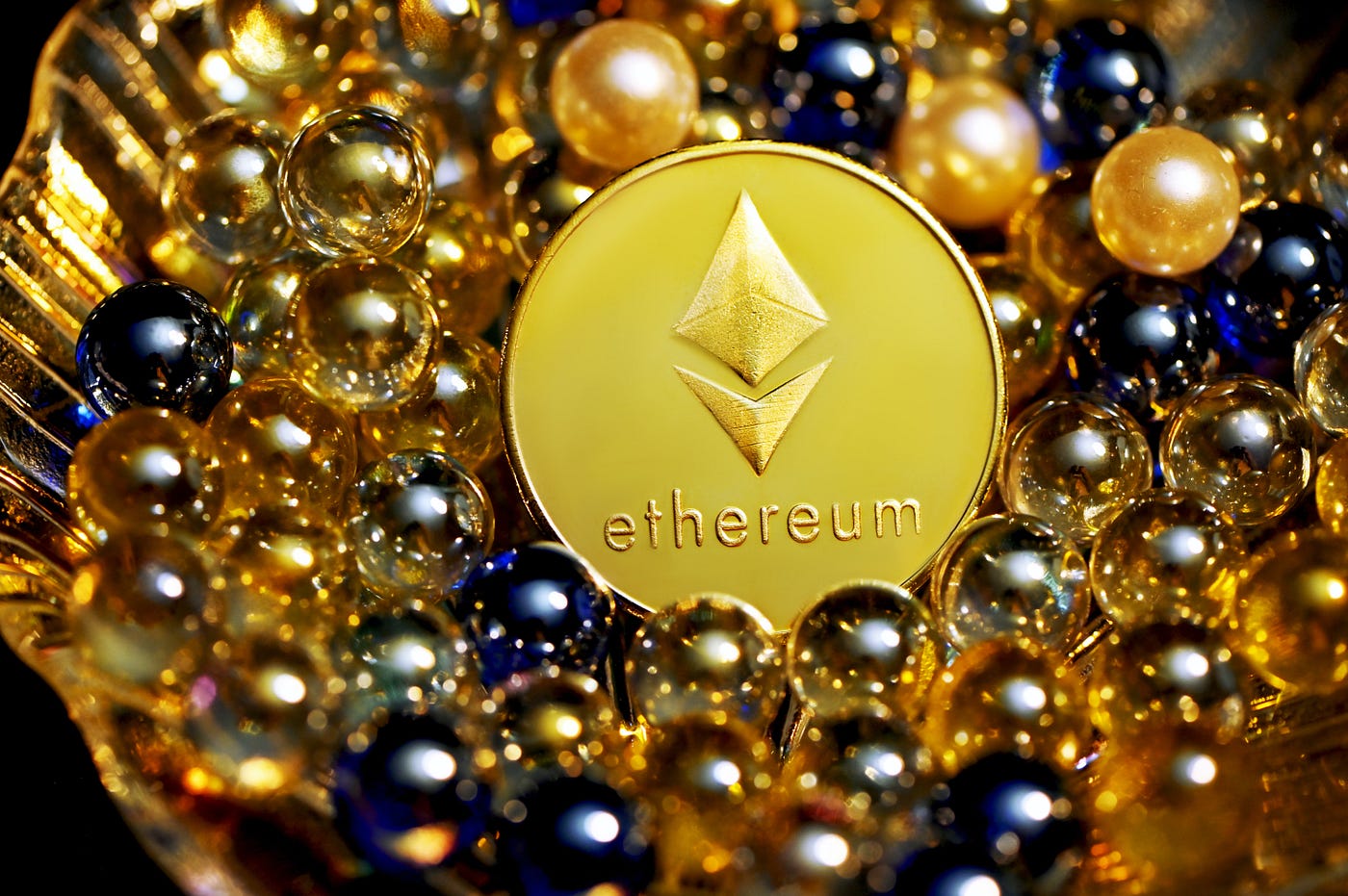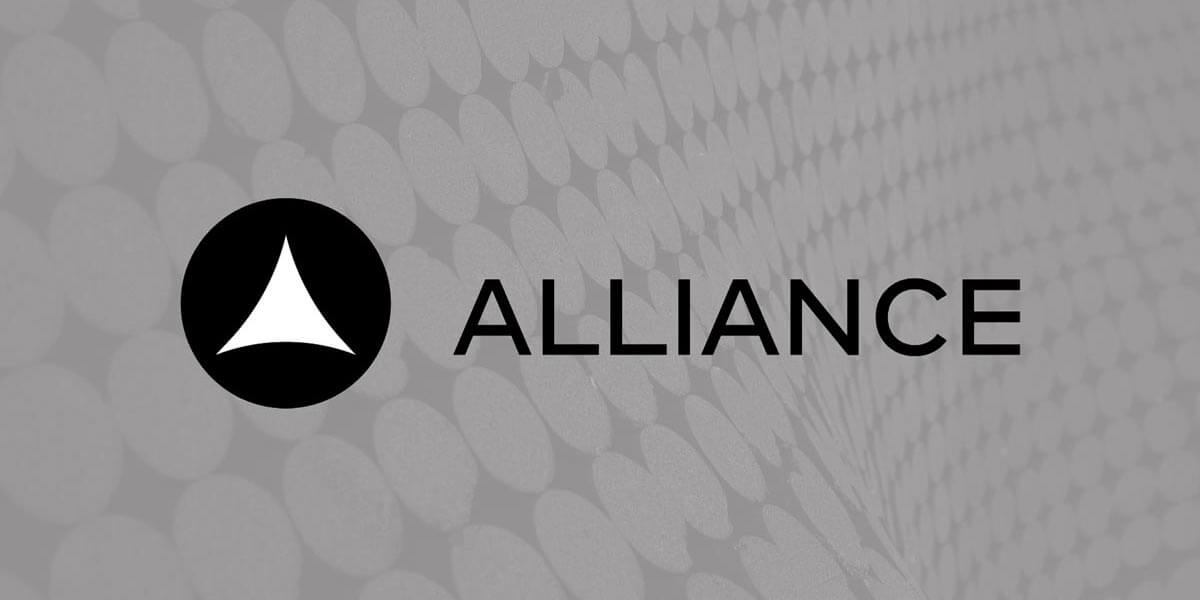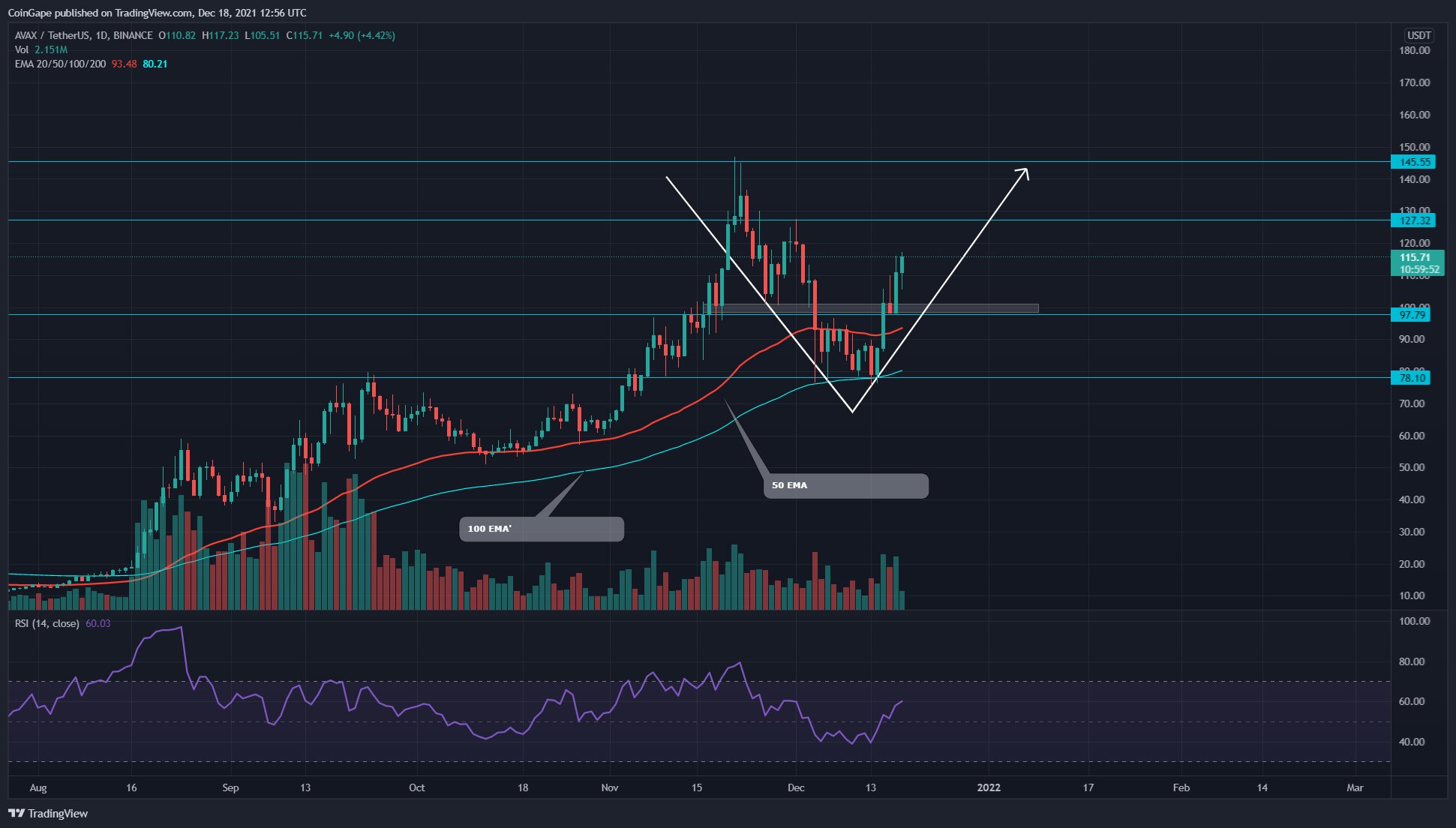What is the Enterprise Ethereum Alliance?
The Enterprise Ethereum Alliance (EEA) is a collaboration between various industry leaders, technology companies, and startups that aims to harness the potential of blockchain technology through the use of the Ethereum platform. Formed in 2017, the EEA’s primary objective is to drive the adoption of Ethereum as an enterprise-grade solution for businesses across different sectors.
Ethereum is an open-source blockchain platform that allows developers to build decentralized applications (DApps) and execute smart contracts. While Ethereum has gained significant popularity in the cryptocurrency realm, the EEA seeks to expand its usage beyond digital currencies and into the realm of enterprise applications.
By fostering collaboration and standardization, the EEA aims to bring together key stakeholders to define common standards and frameworks that facilitate interoperability, scalability, and security. The alliance also aims to provide resources and tools that enable businesses to adopt Ethereum-based solutions more easily.
The EEA consists of a diverse membership base, including large enterprises, startups, technology providers, and industry-specific consortia. Members collaborate to explore and develop use cases that leverage Ethereum’s capabilities to address real-world challenges in various industries, such as finance, supply chain, healthcare, and more.
One of the primary goals of the EEA is to address the limitations of public blockchains, such as Ethereum, in terms of scalability, privacy, and performance. The alliance strives to develop solutions that meet the unique requirements and regulatory standards of businesses while maintaining the core principles of blockchain technology.
Through working groups and technical committees, the EEA aims to drive the development and adoption of Ethereum-based standards and specifications. Members actively contribute to the research, development, and implementation of these standards, ensuring that Ethereum evolves to meet the needs of enterprise applications.
Overall, the Enterprise Ethereum Alliance is a collaborative initiative that brings together industry leaders and technology innovators to unlock the potential of Ethereum as a powerful platform for enterprise applications. By fostering collaboration, standardization, and the development of scalable solutions, the EEA aims to drive the widespread adoption of Ethereum in various industries.
Why Invest in the Enterprise Ethereum Alliance?
Investing in the Enterprise Ethereum Alliance (EEA) presents several compelling reasons for individuals and businesses looking to participate in the rapidly growing blockchain industry. Here are some key factors that make investing in the EEA an attractive proposition:
1. Cutting-Edge Technology: Ethereum is one of the most advanced and widely adopted blockchain platforms available today. By investing in the EEA, you gain exposure to the latest advancements and innovations in Ethereum technology, which can potentially provide significant returns as the platform continues to evolve.
2. Collaboration and Network Effects: The EEA brings together a diverse range of industry leaders, technology providers, and startups. By investing in the alliance, you gain access to a network of like-minded individuals and organizations who are actively working to drive the adoption of Ethereum. This collaborative environment can foster new business partnerships, opportunities for knowledge sharing, and potential collaborations that can benefit your own ventures.
3. Potential for Enterprise Adoption: The EEA is specifically focused on bringing Ethereum into the enterprise space. As more and more companies recognize the potential benefits of blockchain technology, Ethereum stands out as a robust and flexible platform for developing enterprise-grade solutions. Investing in the EEA allows you to be part of this adoption phase and potentially benefit from the increased use of Ethereum by businesses across different sectors.
4. Standardization and Interoperability: Through its technical committees and working groups, the EEA aims to develop common standards and specifications for Ethereum-based applications. This standardization helps to ensure interoperability between different systems and implementations, reducing friction and making it easier for businesses to embrace Ethereum. By investing in the EEA, you contribute to the development of these standards and help shape the future of Ethereum as an industry-wide solution.
5. Upside Potential: As Ethereum becomes more widely adopted and recognized as a viable solution for enterprise applications, there is significant upside potential for investments made in the EEA. The alliance’s focus on research, development, and use case exploration can lead to innovative applications and advancements that drive the value of Ethereum and associated technologies higher.
6. Diversification within the Blockchain Industry: Investing in the EEA provides an opportunity to diversify your portfolio within the blockchain industry. While cryptocurrency investments have dominated the space, the EEA focuses on the enterprise aspects of blockchain technology, offering a different avenue for potential returns and exposure to the burgeoning ecosystem.
7. Influence on Ethereum’s Future: By investing in the EEA, you become an active participant in shaping the future of Ethereum. As a member, you have a voice in the development of Ethereum-based standards, use cases, and applications. This influence allows you to play a role in the direction that Ethereum takes, potentially influencing its growth and adoption in the marketplace.
Overall, investing in the Enterprise Ethereum Alliance provides a unique opportunity to be at the forefront of driving Ethereum’s adoption in the enterprise world. By participating in the alliance, you gain exposure to cutting-edge technology, collaboration opportunities, potential for enterprise adoption, and the chance to shape Ethereum’s future, making it an attractive investment proposition within the blockchain industry.
How to Invest in the Enterprise Ethereum Alliance
Investing in the Enterprise Ethereum Alliance (EEA) requires careful consideration and understanding of the different avenues available. Here are some ways you can invest in the EEA:
1. Membership: One of the primary ways to invest in the EEA is by becoming a member. The alliance offers different membership levels with varying benefits and requirements. By joining as a member, you gain access to exclusive resources, networking opportunities, and the ability to contribute to the development of Ethereum-based standards and use cases. Membership fees may apply depending on the level of membership chosen.
2. Collaboration and Partnerships: Another way to invest in the EEA is by collaborating with or partnering with existing EEA members. By leveraging your expertise and resources, you can work together on projects or initiatives that align with the EEA’s mission. This not only allows you to contribute to the growth of Ethereum but also opens up new business opportunities and partnerships within the EEA network.
3. Research and Development: Investing in the EEA can also involve dedicating resources to research and development efforts related to Ethereum. By exploring and testing Ethereum-based solutions, you contribute to the body of knowledge in the EEA and help advance the technology. This can be done through in-house research or by collaborating with academic institutions and other EEA members.
4. Supporting EEA-Based Projects: A way to indirectly invest in the EEA is by supporting projects that are built on the Ethereum platform and aligned with the EEA’s vision. These projects may include startups, decentralized applications (DApps), or initiatives that leverage Ethereum’s capabilities. By investing in and using these projects, you support the growth and adoption of Ethereum in the enterprise space.
5. Education and Awareness: Investing in the EEA can also involve educating yourself and others about Ethereum and its potential for enterprise applications. By staying informed, spreading awareness, and advocating for Ethereum within your professional network and industry, you contribute to the broader adoption of Ethereum as a valuable tool for businesses.
6. Investing in Ethereum-Based Tokens: Lastly, investing in the EEA can also mean considering investments in Ethereum-based tokens or cryptocurrencies that are affiliated with or supported by the EEA. These tokens may play a role in the development of specific use cases or applications within the EEA ecosystem. However, it is important to conduct thorough research and due diligence before investing in any cryptocurrency to mitigate risks.
It’s crucial to note that investing in the EEA involves more than just financial contributions. It requires active engagement, collaboration, and a commitment to advancing Ethereum’s adoption in the enterprise space. By investing your time, resources, and expertise, you can contribute to the growth and success of the EEA as well as benefit from the opportunities and advantages it presents.
Understanding the EEA Token
When it comes to investing in the Enterprise Ethereum Alliance (EEA), it’s important to understand the role of the EEA token. The EEA token is a digital asset that is issued by the EEA and can be used within the ecosystem. Here are key aspects to consider:
1. Utility: The EEA token serves as a utility token within the alliance’s ecosystem. It can be utilized to access various services, products, or features offered by the EEA and its network of members. These services may include accessing research reports, participating in exclusive events, or gaining priority access to new initiatives or projects.
2. Access to Resources: Holding the EEA token can grant access to educational resources, training programs, and workshops organized by the alliance. These resources can help investors or members gain a deeper understanding of Ethereum technology, blockchain implementation, and the EEA’s vision for enterprise applications.
3. Voting Power: In some cases, the EEA token may confer voting rights within the alliance. This allows token holders to participate in decision-making processes relating to the direction, priorities, and initiatives of the EEA. By holding EEA tokens, investors can actively contribute to shaping the future of Ethereum’s adoption in the enterprise space.
4. Network Interaction: The EEA token can also provide networking benefits by allowing holders to connect with other participants in the EEA ecosystem. This can include members, startups, developers, and industry leaders who are actively engaged in driving Ethereum’s adoption and building enterprise solutions on the platform. Networking opportunities can lead to potential collaborations, partnerships, and business opportunities beyond the initial investment itself.
5. Token Economics: Understanding the token economics is crucial when investing in the EEA token. Factors such as token supply, distribution, and potential tokenomics models should be considered. These factors can affect the long-term value and utility of the token, as well as the potential returns on investment.
6. Compliance and Regulation: Like any other cryptocurrency or utility token, the EEA token may be subject to regulatory requirements and compliance. Investors should be aware of any legal considerations and ensure that their investment aligns with the relevant regulations governing the jurisdiction in which they operate.
It’s important to note that the EEA token may not be available for direct purchase or tradable on exchanges like other cryptocurrencies. The availability and distribution of the token may be subject to specific terms and conditions determined by the EEA. Therefore, investors should closely follow the official announcements and updates from the alliance regarding the token’s availability and any investment opportunities related to it.
Ultimately, the EEA token is designed to create a dynamic and thriving ecosystem within the alliance, providing participants with unique benefits, access to resources, and opportunities within the enterprise Ethereum space. Its utility, potential for participation, and networking benefits make the EEA token an important consideration for those looking to invest in the EEA and participate actively in driving Ethereum’s adoption in the enterprise domain.
Researching Enterprise Ethereum Alliance Membership
When considering investing in the Enterprise Ethereum Alliance (EEA), conducting thorough research about the alliance’s membership can provide valuable insights and help inform your investment decision. Here are key factors to consider when researching EEA membership:
1. Membership Levels: The EEA offers different membership levels, each with its own benefits and requirements. Researching these levels will allow you to understand the varying degrees of access, privileges, and contributions associated with each level. Assessing which level aligns with your goals and resources is crucial to make an informed decision.
2. Membership Benefits: Investigate the specific benefits that come with being an EEA member. These may include access to research reports, participation in working groups, networking opportunities with industry leaders and peers, priority access to events and conferences, or involvement in decision-making processes. Understanding the benefits will help you evaluate the value and potential returns on your investment.
3. Membership Criteria: Understand the criteria for becoming a member of the EEA. This may include company size, industry focus, track record, technical expertise, or commitment to developing Ethereum-based solutions. Evaluate whether your organization meets the criteria set by the EEA and consider how well your organization aligns with the alliance’s mission.
4. Existing Members: Explore the current roster of EEA members to get an idea of the organizations that are part of the alliance. Assessing the diversity of industries, companies of different sizes, and geographical representation among members can provide insights into the potential networking, collaboration, and partnership opportunities available within the EEA ecosystem.
5. Reputation and Expertise: Assess the reputation and expertise of the EEA members. Look into the track record, experience, and contributions of the current members in the blockchain industry and the enterprise space. Consider the value that these members bring to the EEA ecosystem and the potential for knowledge sharing and collaboration with them.
6. Governance and Decision-Making Processes: Understand how the EEA operates, including its governance structure and decision-making processes. Research the mechanisms in place for setting priorities, defining standards, and developing use cases within the alliance. Being aware of how decisions are made and how your organization can contribute can help you evaluate the level of influence and impact you can have as a member.
7. Financial Considerations: Evaluate the financial aspects of EEA membership, including membership fees or any other financial obligations. These costs may vary depending on the level of membership and should be factored into your investment decision. Consider the potential return on investment in terms of the benefits and opportunities provided by the EEA membership.
By thoroughly researching EEA membership, you can gain a comprehensive understanding of the benefits, requirements, and opportunities associated with investing in the alliance. This research will equip you with the information needed to make an informed investment decision that aligns with your organization’s goals, resources, and expertise.
Assessing the EEA’s Potential for Adoption and Growth
Assessing the potential for adoption and growth of the Enterprise Ethereum Alliance (EEA) is an important step in considering investment in the alliance. Here are key factors to consider when evaluating the EEA’s potential:
1. Market Demand: Analyze the current and future market demand for Ethereum-based solutions within the enterprise space. Consider factors such as the growing interest in blockchain technology, the potential for cost savings, increased efficiency, and enhanced transparency provided by Ethereum. Assess whether there is a significant market appetite for the adoption of Ethereum in various industries and whether the EEA is well-positioned to meet this demand.
2. Industry Partnerships: Investigate the partnerships and collaborations that the EEA has established within the blockchain and enterprise ecosystems. Assess the extent to which the EEA has engaged with key industry players, technology providers, and standard-setting organizations. Strong partnerships can enhance the EEA’s credibility, increase its outreach, and open doors to new opportunities for adoption and growth.
3. Enterprise Adoption Case Studies: Examine existing enterprise adoption case studies that highlight the successful implementation of Ethereum-based solutions. Analyze the industries, use cases, and companies involved in these implementations. The existence of real-world applications and success stories demonstrates the viability of Ethereum in the enterprise space and indicates the potential for further adoption within the EEA ecosystem.
4. Technical Advancements: Stay informed about the technical advancements and developments happening within the Ethereum ecosystem. Evaluate the progress of Ethereum in terms of scalability, privacy, interoperability, and security. The EEA’s commitment to technical excellence and research plays a crucial role in ensuring that Ethereum remains a viable and attractive solution for enterprise applications in the future.
5. Regulatory Landscape: Consider the regulatory landscape and its impact on the adoption of Ethereum within the enterprise space. Assess the EEA’s efforts in engaging with regulatory authorities and developing frameworks that address compliance and legal considerations. A proactive approach to regulatory compliance can boost confidence among enterprises, making them more receptive to adopting Ethereum-based solutions.
6. Competitive Landscape: Evaluate the competitive landscape and how the EEA differentiates itself from other blockchain consortia or platforms. Consider the strengths and weaknesses of rival platforms in terms of features, functionality, industry partnerships, and adoption rate. Assess whether the EEA has a competitive advantage that positions it as a leader in the enterprise Ethereum space and whether it can attract more members and drive adoption as a result.
7. Global Reach: Consider the global reach of the EEA and its potential for expansion into new geographical markets. Assess whether the EEA has a diverse member base that represents a wide range of industries and regions. Expansion into new markets can provide growth opportunities and contribute to the widespread adoption of Ethereum and the success of the EEA.
Evaluating the EEA’s potential for adoption and growth involves assessing market demand, industry partnerships, enterprise adoption case studies, technical advancements, regulatory landscape, competitive landscape, and global reach. By carefully analyzing these factors, you can gain valuable insights into the EEA’s prospects and make an informed investment decision.
Evaluating EEA Partnerships and Collaborations
Partnerships and collaborations play a vital role in the success and growth of the Enterprise Ethereum Alliance (EEA). When considering an investment in the EEA, it is crucial to evaluate the alliance’s partnerships and collaborations. Here are key factors to consider:
1. Industry Partners: Assess the breadth and depth of partnerships the EEA has established with industry leaders and organizations. Consider the reputation, expertise, and influence of these partners within their respective industries. Strong and diverse industry partnerships indicate the EEA’s credibility, industry recognition, and the potential for broader adoption of Ethereum-based solutions.
2. Technology Providers: Evaluate the partnerships that the EEA has formed with technology providers specializing in blockchain solutions and Ethereum. Investigate the extent to which these partnerships contribute to the development of tools, frameworks, and technologies that facilitate the adoption of Ethereum within enterprises. Well-established technology partnerships can bolster the EEA’s technical capabilities, aid interoperability, and enhance the overall ecosystem.
3. Standards Organizations: Explore the collaborations between the EEA and standards-setting organizations. Consider the level of involvement and contribution of the EEA in developing Ethereum-related standards for enterprise use cases. Collaborations with standards organizations ensure interoperability, enhance credibility, and streamline the adoption of Ethereum within regulated industries.
4. Academic Institutions: Assess partnerships with academic institutions that contribute to research, education, and talent development in the field of blockchain and Ethereum. Collaborations with reputable academic organizations signify the EEA’s commitment to advancing knowledge and innovation in the industry. These partnerships can foster research breakthroughs, attract top talent, and contribute to the long-term growth of the ecosystem.
5. Startups and Innovators: Investigate the EEA’s collaborations with startups and innovators who are building Ethereum-based solutions or exploring novel use cases. Consider the number and diversity of these partnerships, as well as the level of support provided by the EEA to nurture these startups. Collaborations with startups and innovators bring fresh ideas, creativity, and entrepreneurial spirit to the EEA ecosystem, contributing to its vibrancy and potential for growth.
6. Government and Regulatory Bodies: Assess the EEA’s collaborations with government agencies, regulatory bodies, and policy influencers. Partnerships with these entities can facilitate engagement with policymakers, drive regulatory compliance, and help shape favorable regulatory environments for Ethereum-based solutions. Collaboration with government bodies enhances the credibility of the EEA and may lead to greater adoption and acceptance within regulated industries.
7. Open-source Community: Consider the EEA’s engagement with the wider open-source community and the degree of collaboration with other blockchain projects or communities. Evaluating the alliances formed with other open-source initiatives underscores the EEA’s commitment to interoperability, knowledge sharing, and integration with existing blockchain ecosystems.
Evaluating the EEA’s partnerships and collaborations is essential to understanding the potential for growth and adoption within the alliance. By analyzing the strength, breadth, and strategic relevance of these partnerships, you can gauge the EEA’s ability to drive widespread adoption, innovation, and market influence in the enterprise Ethereum space.
Analyzing EEA Use Cases
One important aspect to consider when evaluating the Enterprise Ethereum Alliance (EEA) for investment is the analysis of EEA use cases. These real-world applications demonstrate how Ethereum technology is being utilized in various industries. Here are key factors to consider when analyzing EEA use cases:
1. Industry Relevance: Assess the use cases that align with industries in which your organization has a vested interest. Look for examples that demonstrate how Ethereum is addressing industry-specific challenges and providing potential solutions. Understanding the industry relevance of EEA use cases can help you evaluate the potential for Ethereum’s adoption in your respective sector.
2. Scalability and Performance: Evaluate the scalability and performance of the use cases deployed on Ethereum within the EEA. Analyze whether the use cases handle a significant volume of transactions efficiently and reliably. Scalable and high-performance use cases are indicative of the potential of Ethereum to support enterprise-level applications.
3. Impact and Transformation: Consider the impact and potential for transformation that the use cases have on their respective industries. Assess how Ethereum is enabling new business models, improving efficiency, streamlining processes, enhancing transparency, or driving innovation. Use cases that demonstrate transformative potential indicate Ethereum’s value proposition in driving change and value creation.
4. Adoption and Success Stories: Investigate the level of adoption and success stories associated with specific EEA use cases. Look for evidence of real-world implementation, user feedback, and measurable outcomes. This analysis can provide insights into the viability and effectiveness of Ethereum-based solutions in practice.
5. Collaboration and Partnerships: Assess the collaboration and partnerships involved in the development and implementation of the EEA use cases. Consider the involvement of EEA members, technology providers, startups, and industry leaders. Collaborative use cases reflect the EEA’s ability to foster cooperation and leverage diverse expertise for successful outcomes.
6. Regulatory Compliance: Evaluate the use cases’ adherence to regulatory requirements in their respective industries. Analyze how Ethereum technology and the EEA ecosystem address compliance challenges, such as data privacy, security, and record-keeping. Compliance-focused use cases demonstrate the EEA’s commitment to meeting regulatory standards and its potential to thrive in regulated environments.
7. Technological Advancements: Consider the technological advancements and innovations demonstrated by the use cases. Assess how Ethereum’s features, such as smart contracts, decentralized governance, and data immutability, are leveraged to deliver unique value propositions. Use cases that showcase cutting-edge technological advancements illustrate Ethereum’s potential for solving complex business problems.
By analyzing EEA use cases, you can gain insight into the practical applications of Ethereum technology in various industries. Understanding the industry relevance, scalability, transformative impact, adoption levels, collaborative efforts, regulatory compliance, and technological advancements showcased in these use cases will help you gauge the potential for Ethereum’s growth and adoption within the EEA ecosystem.
Mitigating Risks in EEA Investment
Investing in the Enterprise Ethereum Alliance (EEA) involves risks that should be carefully considered. However, there are strategies you can employ to help mitigate these risks. Here are key factors to consider when mitigating risks in EEA investment:
1. Thorough Due Diligence: Conduct thorough due diligence on the EEA and its members. Research the backgrounds, experience, and reputations of the members, as well as the alliance’s governance structure, mission, and track record. Understanding the organization, its members, and the dynamics within the EEA can uncover potential risks and provide insights into the EEA’s viability as an investment.
2. Assess Business Viability: Evaluate the alignment of Ethereum-based solutions with the specific needs and challenges of enterprise organizations. Understand the potential market demand for these solutions and assess the competitive landscape. Investing in solutions that meet genuine enterprise needs and have a viable business model can help mitigate the risk of investing in the EEA.
3. Technical Evaluation: Evaluate the technical aspects of Ethereum and the EEA’s infrastructure. Assess the scalability, security, and performance of the Ethereum platform and the EEA’s initiatives. Understanding the technical strengths and limitations can help you assess the risks associated with the technology and its potential long-term viability.
4. Regulatory Compliance: Consider the regulatory environment surrounding Ethereum and its potential impact on the EEA’s operations and adoption. Evaluate the EEA’s efforts in promoting regulatory compliance and engagement with regulatory bodies. Taking steps to ensure compliance with relevant regulations can help mitigate regulatory risks and enhance the EEA’s long-term prospects.
5. Diversification: Mitigate investment risks by diversifying your portfolio. Investing in a range of blockchain projects, cryptocurrencies, or technologies can help spread risks. By not putting all your investment capital into a single investment, you reduce the potential impact of any one investment’s failure or underperformance.
6. Stay Informed: Continuously monitor developments in the EEA ecosystem, as well as in the broader blockchain industry. Stay informed about technological advancements, regulatory changes, and market trends. Being proactive and staying updated will position you to make informed decisions and adjust your investment strategy accordingly.
7. Seeking Expert Advice: Consider consulting with industry experts, financial advisors, and legal professionals who specialize in blockchain and cryptocurrency investments. Their expertise can help you navigate through the complexities, mitigate risks, and make well-informed investment decisions.
8. Time Horizon: Set realistic expectations and determine an appropriate time horizon for your investment in the EEA. The adoption of blockchain technology, including Ethereum, in the enterprise space is still in its early stages. Understanding that returns may take time and that there may be short-term volatility can help manage expectations and mitigate investment risks.
Mitigating risks in EEA investment requires careful analysis, due diligence, and diversification. By thoroughly evaluating the EEA’s viability, considering technical aspects, monitoring regulatory compliance, staying informed, seeking expert advice, and setting realistic expectations, you can better align your investment decisions with your risk appetite and potentially reduce vulnerabilities.
Conclusion
Investing in the Enterprise Ethereum Alliance (EEA) presents a unique opportunity to be at the forefront of blockchain technology adoption in the enterprise space. By evaluating key aspects such as the EEA’s mission, membership, partnerships, use cases, and potential for adoption and growth, investors can make informed decisions about their involvement with the alliance.
The EEA plays a significant role in driving the adoption of Ethereum as an enterprise-grade solution. Through collaboration, standardization, and the development of use cases and technical standards, the EEA aims to unlock the full potential of Ethereum in various industries.
When considering investment in the EEA, it is important to conduct thorough research and due diligence. Evaluating the EEA’s partnerships and collaborations, understanding the EEA token’s utility, and assessing the potential risks can provide valuable insights into the alliance’s viability and prospects for success.
Furthermore, analyzing EEA use cases helps in understanding the practical applications of Ethereum in different industries and their transformative potential. Assessing the scalability, industry relevance, adoption levels, and technological advancements showcased in these use cases can provide insights into the future growth of Ethereum and the EEA.
Investing in the EEA requires active engagement and a long-term perspective. Collaboration, networking, and staying informed about technological advancements and regulatory developments in the blockchain industry are crucial to maximize the benefits and mitigate potential risks.
Ultimately, investing in the EEA is a strategic decision that requires careful consideration of market demand, industry partnerships, technological advancements, and potential regulatory implications. By aligning your investment strategy with the EEA’s mission and actively engaging with the alliance, you can contribute to the growth and success of Ethereum in the enterprise space while potentially reaping the benefits of this innovative technology.
























